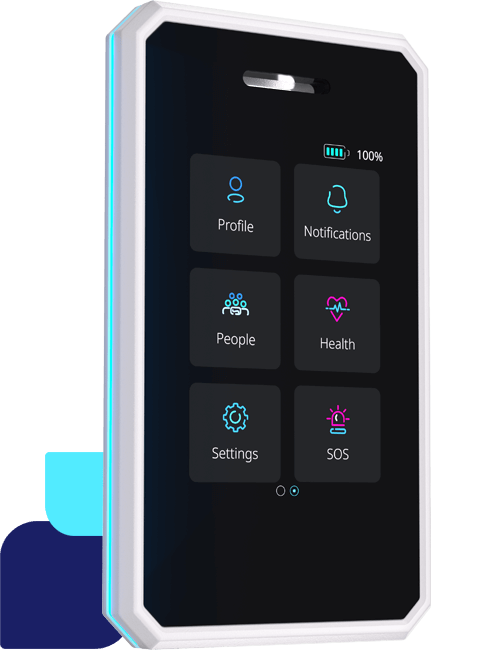It’s important to understand engagement in your business. In the past, technology has been deployed to varying degrees to figure out how engaged workers are. But most systems struggle to provide accurate, real-time information about the levels of engagement and what effect that is having on day-to-day work.
It’s easy to let engagement lapse in the workplace, especially when your workers are spread out over large sites or different locations. But a lack of engagement can lead to low productivity, high staff-turnover, and poor service.
Low engagement may also indicate that something else is going on. Maybe an employee needs more support or help with ongoing issues. So, companies need to revisit employee engagement and perhaps do more to help monitor it and make improvements.
How can you monitor and improve engagement? Especially when it comes to your busy, on-their-feet frontline workers? We look at how the Sense system can help companies monitor the engagement of their deskless workforce.
Promote the positive, negate the negative
Giving your employees Sense Badges can help you know how engaged employees are with their work, over any site, or location. Functionality included in the Sense real time location system, such as one-tap wellbeing surveys, task management and time & attendance can provide indicators which highlight high or low engagement.
By identifying where high and low engagement occurs, you can begin to identify trends that affect engagement. This makes it easier to identify and encourage positive behaviours, as well as eliminate negative behaviours, such as poorly finished tasks which are rushed, or half-complete.
Positive behaviours help to drive productivity and create a strong culture within your business. By identifying employees who demonstrate these behaviours, you can be reward them, and promote the positive behaviours. You can learn from them, about what drove those behaviours. You can also make efforts to make sure you retain the most engaged members of staff.
Negative behaviours need removing from the workplace as soon as possible. Employees who are spreading disengagement and negatively affecting other employees are of the biggest concern. It’s important to learn why these employees are disengaged, and what can be done to remedy it. Action can then be taken to try and ensure the situation doesn’t happen again – which doesn’t necessarily mean removing the bad apples from the basket. Often, there are underlying issues that are far easier to fix, which can help all members of staff engage once more with their jobs.
Thus, once you have established benchmarks of what behaviours indicate low engagement, the Sense system can help identify signs of disengagement and you can then take precautionary action to boost engagement and help negate the negative.
Check in with wellbeing surveys
With Sense, it’s possible to send out wellbeing surveys to your workers, wherever they are. This lets you know if anyone is experiencing problems so you can provide the assistance necessary.
Employees who feel supported and appreciated will often feel more engaged than employees who don’t feel supported or appreciated by their employer. Frontline workers can be subjected to tough conditions, so regular check-ins can help people feel supported and appreciated.
It can be difficult to know how a person is feeling – by asking them regularly through wellbeing surveys, the Sense system can help you establish a benchmark of how a person feels and be proactive when you start to notice changes in their usual baseline.
Engaged employees usually finish tasks on time
Knowing how productive employees are, can give you a pretty good idea of how engaged they are feeling. Low productivity can indicate disengagement, and vice versa.
The Sense system can generate reports which clearly show how employees are completing tasks. This data can show you who is completing their work fully and in good time, and who is not completing tasks, or taking far longer than they should be. Averages can be calculated across your entire global workforce if necessary – meaning you can quickly identify silos or pockets of disengagement.
A remedy for incomplete tasks, or unacceptable time taken, could be as simple as a conversation with an employee or team, or arranging training to ensure they fully understand their role within the business.
Read? Replied? Ignored?
If an employee is hard to reach through messages, it may be a sign that they are struggling, that they’re overwhelmed, or simply that they aren’t interested – all warning signs of disengagement. Especially if an employee begins to disregard help requests. Whereas, if an employee reads messages and is responsive to an appropriate level, that indicates a healthy level of engagement.
The Sense system has the capability to deliver reports to management about employee read/response rates, which can help you keep your finger on the pulse of the organisation and address engagement issues as they arise.
Make employee steps count
Sense technology can count employee steps. This enables an organisation to establish a baseline of how many steps an engaged employee completes per shift, and highlight when an employee is underactive, or overactive.
Performing significantly fewer steps than necessary to complete tasks properly could show the tasks are not being completed properly and that the employee is disengaged.
Keeping an eye on time & attendance
Employee time and attendance is a good indicator of how engaged an individual is. If an employee regularly shows up late, consistently requests days off at very short notice, or scores poorly on their Bradford factor score, it can show a poor level of engagement.
The Sense system can generate reports that demonstrate poor time and attendance so your company can take appropriate action, whether that’s offering support or a disciplinary meeting.
There are many faces of engagement
There’s no single way to measure engagement. But through combining different data inputs such as surveys, productivity scores, attendance and absenteeism, etc – you can begin to build a helpful picture.
The Sense system can compare, contrast, and combine data collected by Sense Badges to build reports which clearly shows indicators of low engagement. The system can also help to demonstrate indicators of high engagement, so you can repeat the actions which led to it.
To learn more about how your company can monitor and improve employee engagement, speak to one of our Sense consultants today.







